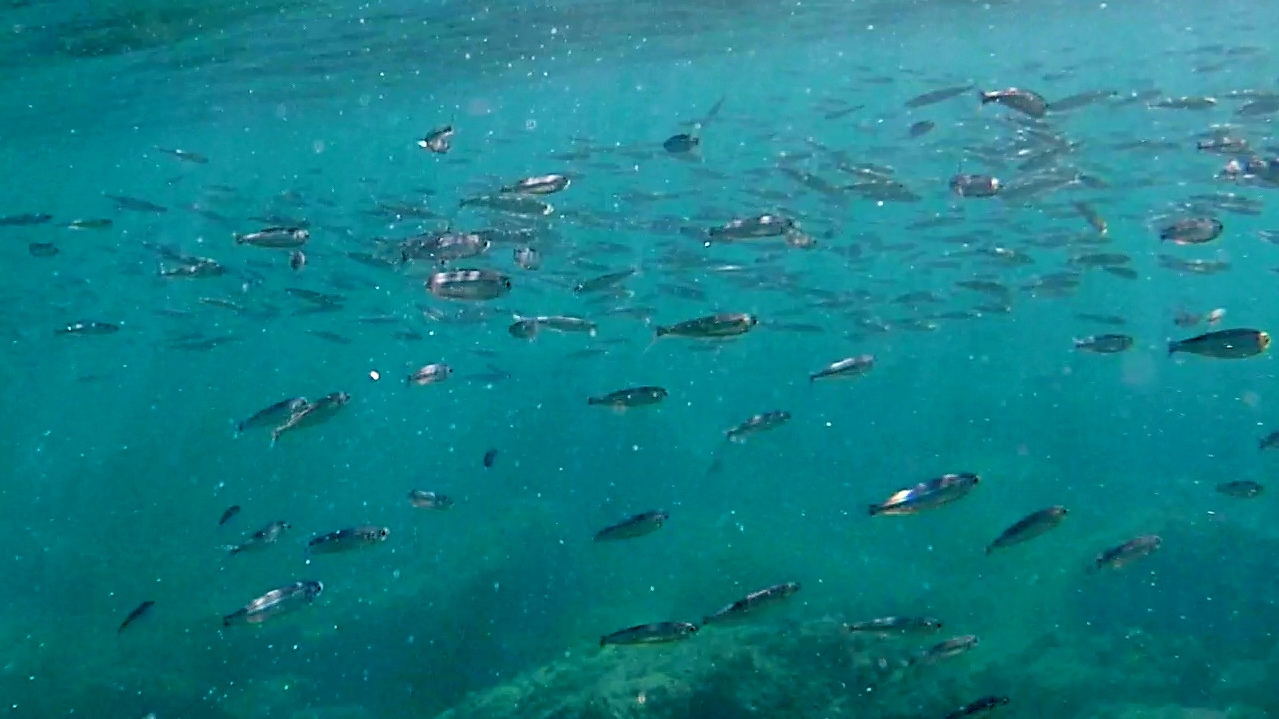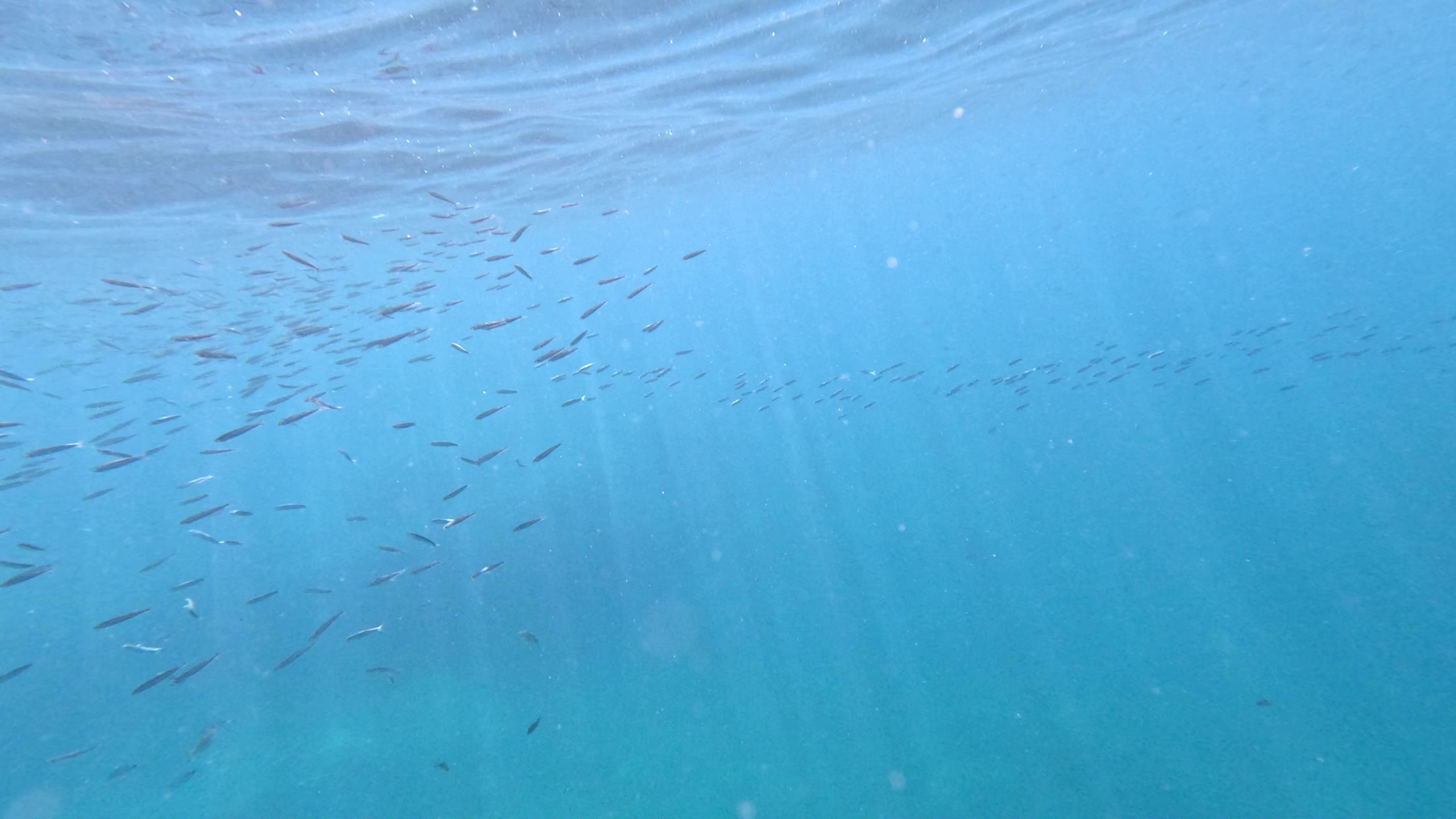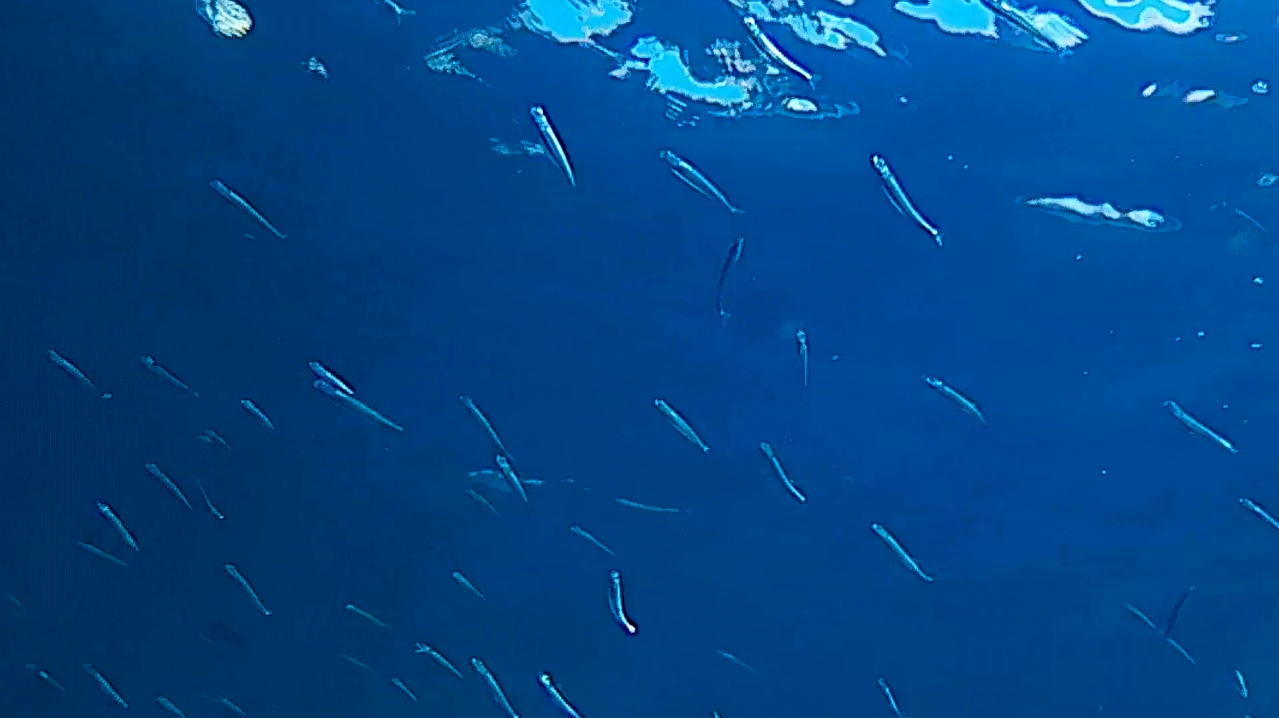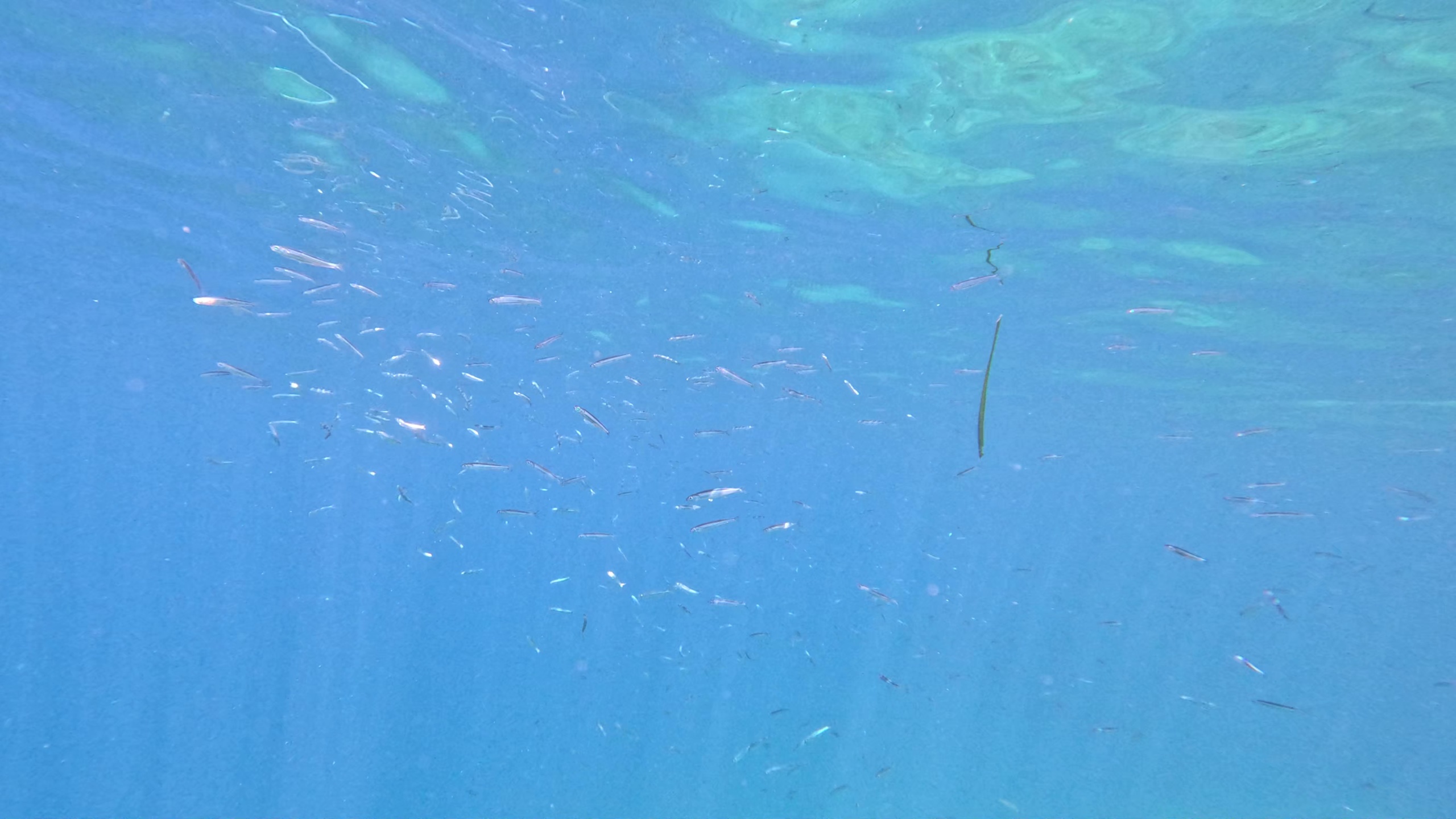European anchovy - Engraulis encrasicolus
European anchovy (Engraulis encrasicolus) is a forage fish somewhat related to the herring. It is a type of anchovy; anchovies are placed in the family Engraulidae. It lives off the coasts of Europe and Africa, including in the Mediterranean Sea, the Black Sea, and the Sea of Azov. It is fished by humans throughout much of its range. Acciuga alice Engraulis encrasicolus European anchovy intotheblue.it

Etymology
This species can be fished from the shore with simpler gear, such as beach seines, and it has been widely-eaten for millenia, has been fished since ancient times. Both the species name, “engraulis”, and the specific name “encrasicolus” are common names from Ancient Greek.
Description

The European anchovy is a coastal pelagic species; in summer, it usually lives in water less than 50m deep (although, in the Mediterranean, it goes to depths of 200m in winter), and it may go as deep as 400m. As it is euryhaline, it can live in water with a salinity of 5-41 PSU (sea water salinity is usually 35 PSU). It can therefore live in brackish water in lagoons, estuaries, and lakes.
European anchovies eat plankton, mostly copepods and the eggs and larvae of fish, molluscs, and cirripedes. They are migratory, often travelling northwards in summer and south in winter.

Life cycle
The species spawn multiply in warm periods from about April to November, depending on when the temperatures are warm enough. At least some local subpopulations have separate spawning grounds, and are thus genetically distinct, although spawning grounds shift. Some spawn in fresh water. The shape of the eggs is ellipsoidal to oval. The eggs float as plankton in the upper 50m of the water column for about 24-65 hours before hatching. The hatched larvae are transparent and grow rapidly; a year later, in the unlikely event that they survive, they will be 9-10 cm long. The females are larger than the males. When they reach a length of 12-13 cm, they spawn for the first time. A survey in southwestern Africa found no specimens older than three years.

Distribution
European anchovies are abundant in the Mediterranean and formerly also the Black and Azov seas (see below). They are regularly caught on the coasts of Bulgaria, Croatia, France, Georgia, Greece, Italy, Albania, Romania, Russia, Spain, Turkey and Ukraine. The range of the species also extends along the Atlantic coast of Europe to the south of Norway. In winter it is common off Devon and Cornwall (United Kingdom), but has not hitherto been caught in such numbers as to be of commercial importance.

European anchovies, despite the name, are commercially important down the west coast of Africa, although they are most abundant at the north end of this range. The species is most commercially important in Morocco. In Mauritania, artisanal fishers do not target the species, and commercial fisheries have size limitations.
In West Africa, these anchovies are widely fished and eaten. In Nigeria, Ghana, and Benin, it is an abundant and important commercial species. After the end of the upwelling season ends the Sardinella fishery, fishers change net size to catch anchovies. In Guinea, Gambia, and Senegal, it is not an important commercial species.
South of the Angola/Namibia border, Engraulis encrasicolus (the European Anchovy) mixes with Engraulis capensis, the South African Anchovy. The Namibian fishery is significantly involved in fishmeal and fish oil production.
European anchovies are also found in upwelling areas off the east coast of Africa.
https://en.wikipedia.org/wiki/European_anchovy
Gallery
Video Gallery
